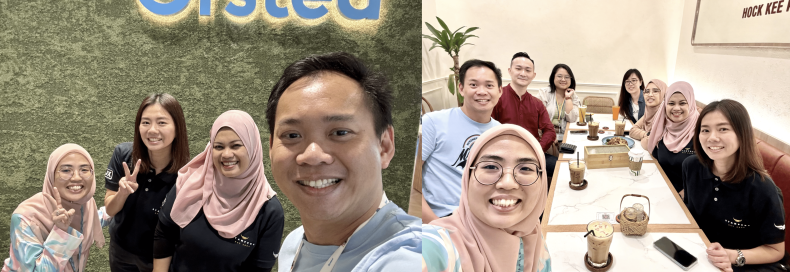A Gift of Fire, Design & AI, Reflections
When Shaza revealed in our Slack channel her upcoming talk on AI/UX at Ørsted on April 25th, I was beaming with excitement as the notion of AI/UX sparked a curiosity tinged with a hint of apprehension in me. Would this innovative frontier replace our roles, or augment them? Eager to unravel the mystery, I eagerly anticipated Shaza’s insights.
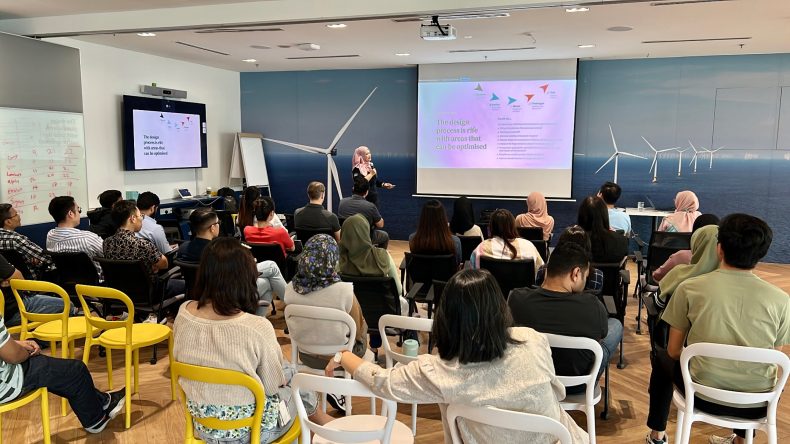
Stepping into the Ørsted Malaysia office feels like entering a fresh, modern space. Sunlight pours through expansive windows, illuminating a space furnished with sleek Nordic design, the space feels inviting and innovative in its clean lines. Zen and Nuriy from the UX team greeted Shaza and me with a warm welcome, a palpable energy buzzed through the air with a mix of focus and friendly collaboration. It’s clear this is a place where people from over 17 nationalities are passionate about Ørsted’s mission in renewable energy, and that gets us excited to be part of it!
Shaza started the talk with the myth of Prometheus, the Greek titan who is best known for defying the Olympian gods by stealing fire from them and giving it to humanity. The fire he gave wasn’t just warmth, but the spark of progress in technology and knowledge, and the fire that brought us to this talk today, is AI.
A little soul-searching before AI tooling
To design for a relationship with AI, we need to know ourselves first.” – IBM, Design for AI
Stampede has been a long advocate of the use of thoughtful design and technology to create positive change. Our current exploration, “To AI or not to AI?”, began with deep reflection, because as with any true improvement, the journey starts with a clear understanding of why. We found asking ourselves repeatedly, “Will doing this help us create a better world?” and if it does, “What does a better world look like to us?”, while we are on our way to creating a better world, “Are we being thoughtful with how we do it?”
Our curiosity is insatiable, like a researcher chasing down a breakthrough.
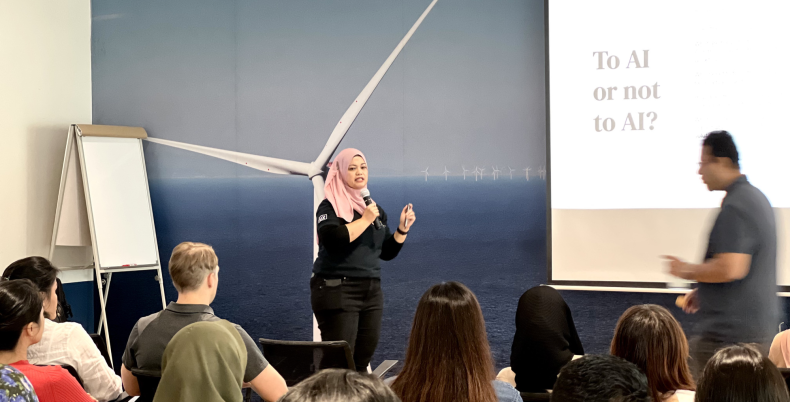
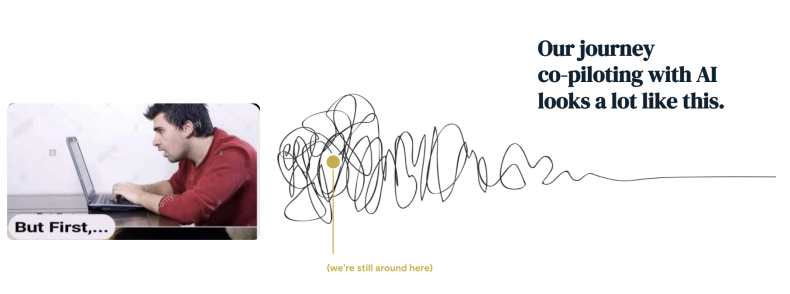
Our early journey in injecting AI into our design process
The real value will come from using AI to enhance human creativity and innovation, supporting human needs and potentials.” — Ginni Rometty
The design process, from user discovery and problem definition all the way through prototyping and testing, offers numerous opportunities for optimization. In Stampede, we view this process through the lens of “Drag vs. Lift”. Drag represents actions or practices that slow us down, reduce efficiency, or stifle creativity. Conversely, Lift refers to actions that boost productivity, spark innovation, and streamline workflows.
We looked for drags in two primary areas: Research and Design Delivery. Our strategy was to over-index on pains in the design process that are also causing business pains. Ideally, these drags would require less effort to address yet deliver significant impact. For each pain point, we then explore potential AI solutions that could act as our co-pilots in the design process.
An example of Drag is the endless design iteration cycle, which can significantly delay the product’s time-to-market. While iterations are crucial for building confidence, there is a tipping point. We use the Rule of 70% in our process, suggesting to aim for 70% confidence to make timely decisions, balancing accuracy with speed. But how do we do this?
Stampede’s UX researchers help PMs achieve the critical 70% confidence mark faster by using AI co-pilot that automatically records, transcribes and analyze user feedback from testing sessions, accelerating actionable insights and propelling product development. We also employ advanced user behavior models to help forecast future trends and predict user reactions to different design options, empowering product teams to proactively anticipate user needs and deliver solutions that resonate. This is how UX researchers in Stampede become key partners in this fast-paced decision-making process.
AI is definitely changing the game in our processes, like how we conduct user research differently now with AI-assisted proto-persona, or how we design surveys differently now with AI to role play as respondents, and it’s only going to be more exciting from here! Surprisingly the one that sparked the most conversation during the talk was, how do we design accessibility differently now with AI?
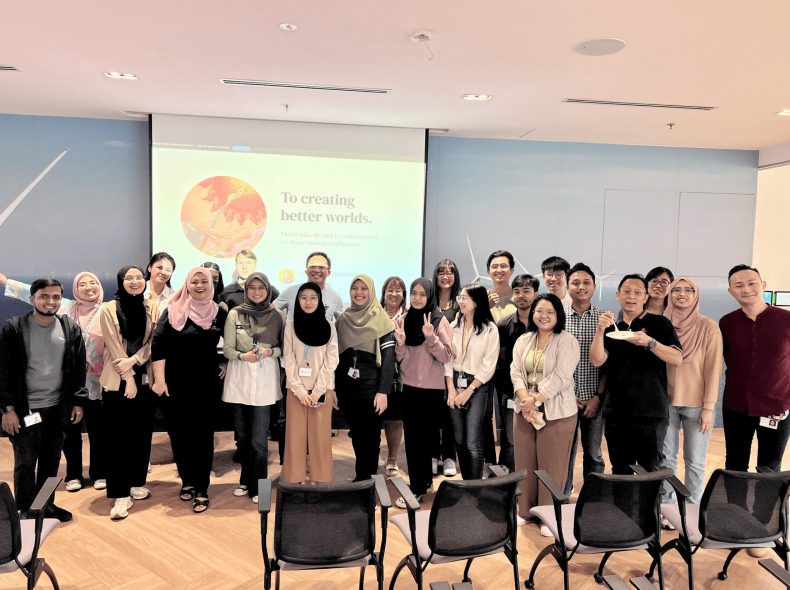
Transforming the digital experience of seniors
The crowd started stirring into accessibility topics when Shaza mentioned about how frustrating it can be for our parents to use apps that seem like a breeze to us. Technology can be a real barrier for the senior community and often it’s because we, the younger generation, design it without fully comprehend their needs. We might think an interface is clear and simple, but for someone with declining eyesight and dexterity, it could be a confusing jumble. This is where AI enters as an accessibility game-changer, it can help us realize blind spots by analyzing user behavior patterns and identify areas where seniors might struggle with an app. It can assist us in designing appropriate copywriting tone, creating a designing language that resonate with their physical and emotional needs. By leveraging AI in our process, we can move beyond designing for our current selves and create technology that truly empowers everyone, regardless of age or ability, creating a better world for our senior community (and perhaps our older selves might benefit from it!)
Intersectionality is the dawn of AI-ready teams
Lunchtime buzzed with discussions about future-ready designers with the Ørsted team. We shared Stampede’s “design onigiri” illustration, visualizing the roles of UX, UI, and product designers. Imagine a designer with business acumen and a product manager fluent in user research, these overlapping skills don’t clash, instead, they spark a powerful synergy that this intersectionality creates a shared perspective, supercharging collaborations that will move the industry forward.
Fun fact: The “design onigiri” was inspired by Shaza’s recent trip to Japan. The Ørsted team saw an opportunity to suggest a Malaysian twist – a ‘nasi campur’ version, which is really awesome, talk about global design inspiration!

And it’s a wrap!
A huge thank you to Ørsted’s UX team, especially Zen Cheong and Nuriy Arisa and your fantastic design team, for your incredible hospitality and for creating a space where we learn alongside fellow designers. It’s collaborations like these that fuel our mission at Stampede to create better worlds, one thoughtful innovation at a time 🚀
